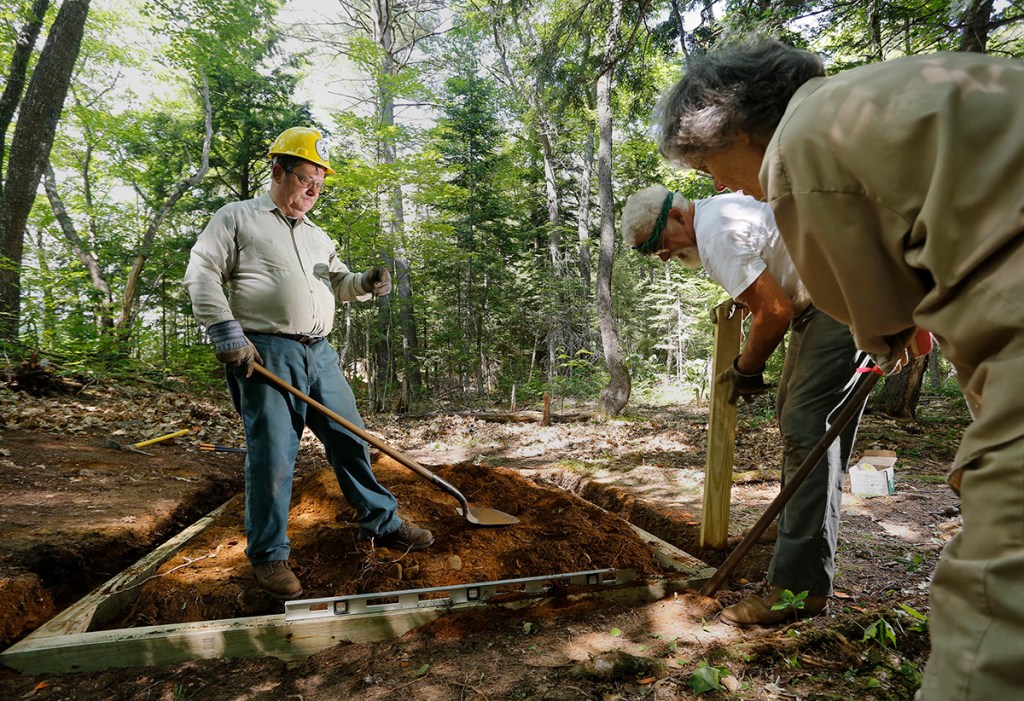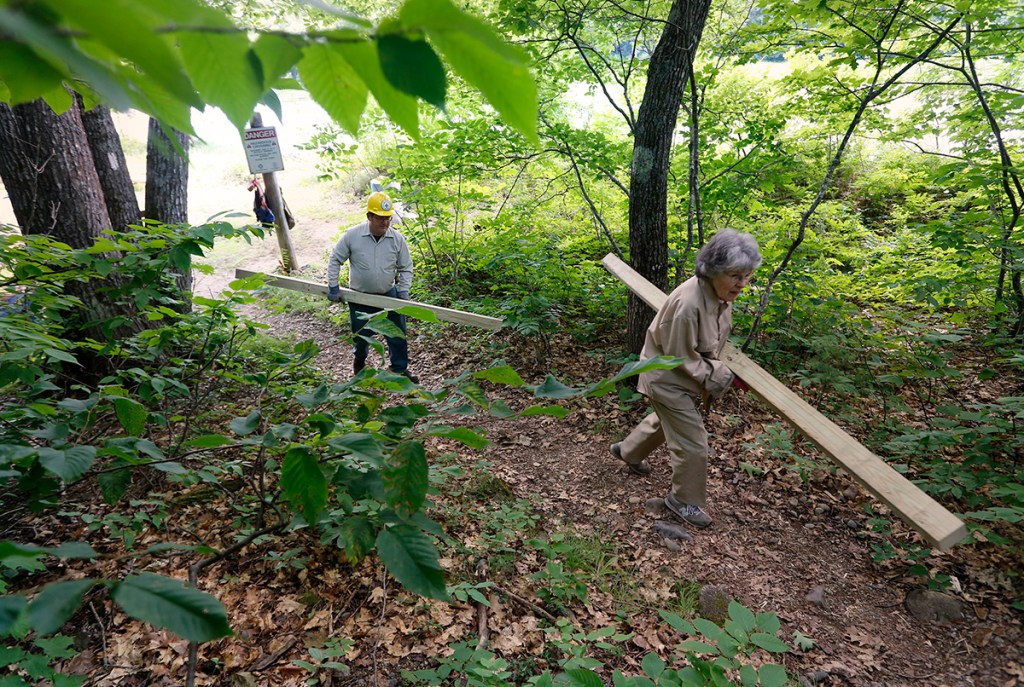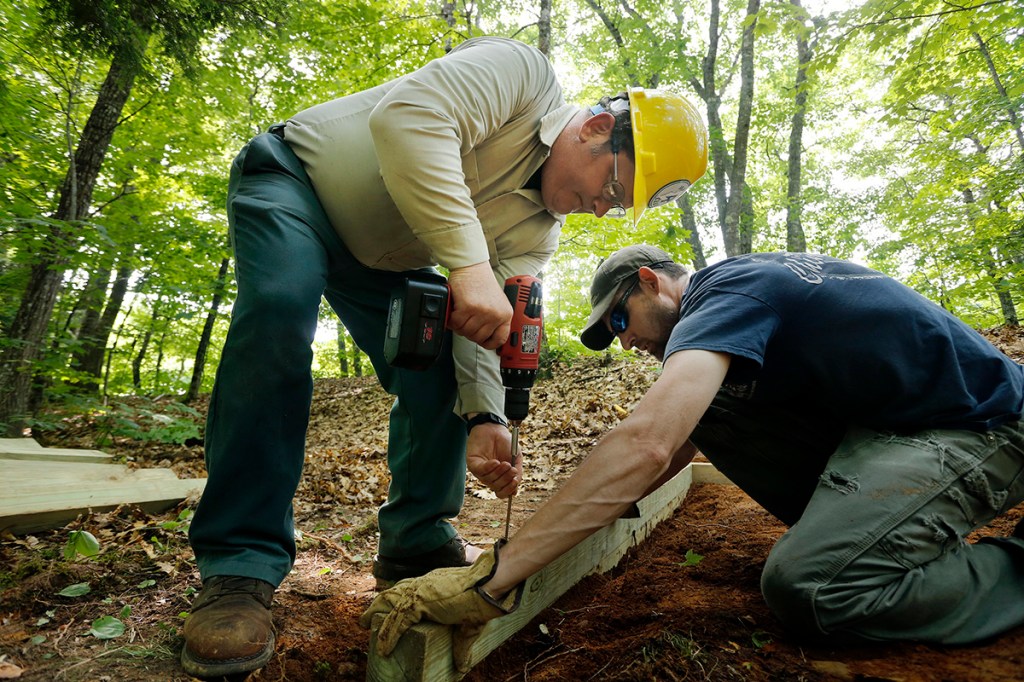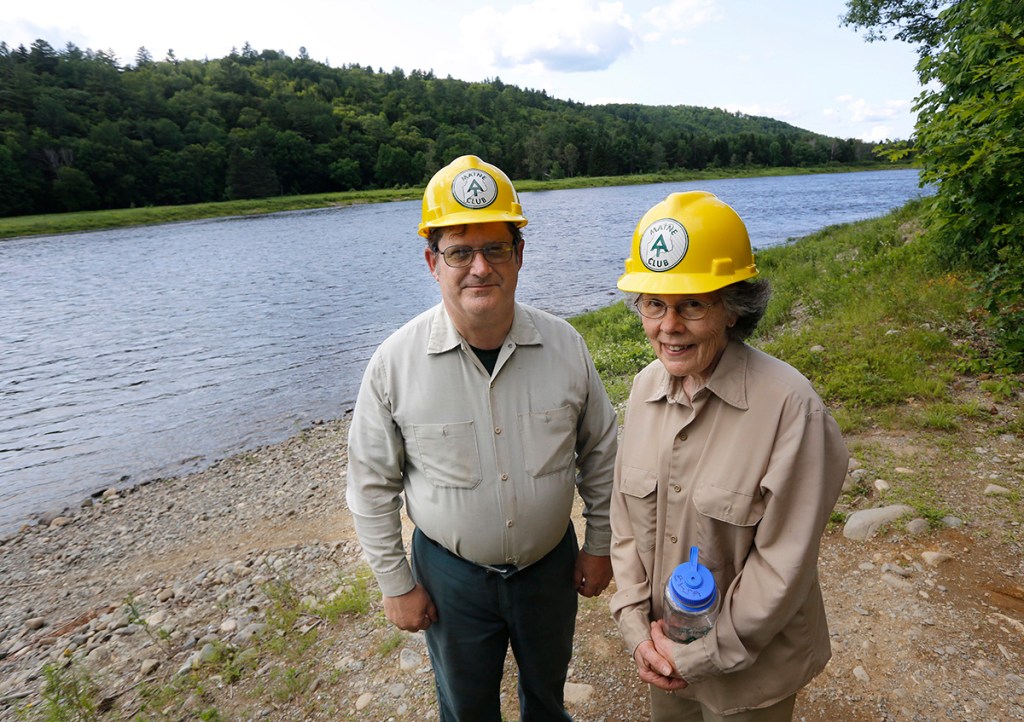CARATUNK — By all accounts Lester Kenway does not stand out on a trail crew. He talks quietly, moves slowly and isn’t one to brag. But the woodland and mountain trails he has designed, the trail construction methods he has created – originating in Italy, Nepal and out West – have made Maine’s wet and rooty footpaths sound.
His trail-building expertise has been used across the country at national and state parks, and has been recognized by the Appalachian Trail Conservancy, which oversees the 2,180-mile East Coast trail.
Kenway worked as the trail supervisor in Baxter State Park from 1978 to 2000. He was the program coordinator for the Maine Conservation Corps from 2001 to 2008.
Since 1975, Kenway has served in a volunteer capacity as an officer of the Maine Appalachian Trail Club, which maintains the 267 miles of the trail in Maine. This volunteer work, to which Kenway now devotes as much as 40 hours a week as the club’s trail overseer, is his passion.
At the Appalachian Trail Conservancy in Harpers Ferry, West Virginia, AT officers call Kenway a technical revolutionary for trail work everywhere, said Laurie Potteiger, the AT Conservancy’s information officer.
“He pioneered new backcountry trail construction and rehabilitation techniques for efficiently moving heavy rocks that have been adopted up and down the AT and are now standard in trail-building,” said Potteiger.
For his distinguished contributions, the AT Conservancy made Kenway an honorary member in 2007.
In Maine, the Baxter State Park director, Jensen Bissell, said Kenway is responsible for the modern trail construction on Mount Katahdin. Kenway stabilized and rebuilt the trail at the summit, at the northern terminus of the AT. It’s probably his grandest achievement.
“Lester led the effort to harden and secure the park’s most popular and heavily used trails, including the Chimney Pond Trail and many of the popular access routes to Baxter Peak (on Katahdin) above tree line on the park’s sensitive tableland,” Bissell said.
The rope-pulley technique he used on Mount Katahdin has been exported to Yellowstone National Park, the Adirondack mountains, the Grand Teton mountains and beyond.
Kenway, in his unassuming way, said he would expect his trails to last centuries. His motto is: “Do it well, do it once, do it to last.”
But he’s contributed even more to Maine’s trail community.
Bruce Grant of Dover-Foxcroft, a member of the MATC since 1989, said Kenway has taught hundreds of trail workers and crew leaders. In his travels to parks around the country, Grant said he’s met forest rangers, park rangers and other trail maintainers who have been influenced by Kenway’s techniques.
“It’s rare to go anywhere in the country where there is a trail-crew community and not find someone who knows Lester personally or has heard of him. He is a pioneer and pretty widely recognized,” Grant said. “The first time you work with him, it will seem like he’s not doing a lot. But he’s sizing things up. He’s got a good knack for seeing how people fit together. He’s an interesting guy,and a good guy. He’s quiet, unassuming.”
Quiet indeed.
Trying to get Kenway to talk about his trail work credentials is like trying to move boulders. While working on a composting privy along the AT in Caratunk a week ago, Kenway, 60, glossed over his experience, excitedly explaining, instead, about the composting outhouse he was helping to build.
It is the third composting privy along the Maine section of the AT, but one of the 44 that are planned, Kenway said.
With arthritis in his knees, Kenway can’t hike anymore. He saves his wilderness rambles for his trail work.
His wife, Elsa Sanborn, the Maine club’s treasurer, works quietly alongside him a few times a year.
Mostly, Kenway is meeting new volunteers, sharing and spreading his mantra: Build it to last.
“You can’t spend a half day with Lester without learning something new,” said Craig Dickstein, who oversees a section of the AT in western Maine and worked with Kenway on the Caratunk privy.
Growing up near Acadia National Park, Kenway was influenced by the work of the Italian stone artisans who helped build the park. It’s here he first saw how beautiful and effective stonework could be.
“I used to hike the stone steps created by the Italian stone workers at the turn of the last century,” Kenway said. “I guess I wanted to transport that to other places in Maine.”
He studied innovative stone work in other parts of the world, such as Nepal. In a country where trails amount to trade routes, Kenway delighted in the engineering brilliance in these cobbled paths.
“The most important thing used in Nepal is the inside drainage. Water will undo everything if you don’t have good drainage. And the highest form is inside drainage,” Kenway said.
He applied the technique on the trails of Katahdin, where snow melt as well as spring runs hard and fast.
“This was the most challenging,” Kenway said. “I think it will last decades, if not centuries. With maintenance I think it will last a good few 100 years.”
But at smaller Kenway-made trails in Maine, locals give his work the same vote of confidence.
Stephanie Clement, the conservation director at the Friends of Acadia, said the group hired Kenway two years ago to build an important trail connecting Trenton Elementary School to the Acadia transportation center. The trail had to traverse a wetland and lead Acadia visitors to a beautiful, hidden heath.
Kenway gave the friends group the lowest bid, then built it himself.
“So many people have never seen that heath. Now they have a way to get to it,” Clement said. “I would say the trail will last decades. The log work that Lester did on the bog bridges, those will last much longer.”
Kenway said he has many years of volunteer work to do. He views his contribution as “doing good things for people and good things for the Earth at the same time.”
And when asked the one thought he’d like to leave with hikers and non-hikers alike, Kenway thought about it, smiled, and said simply: “Come join us.”
Send questions/comments to the editors.








